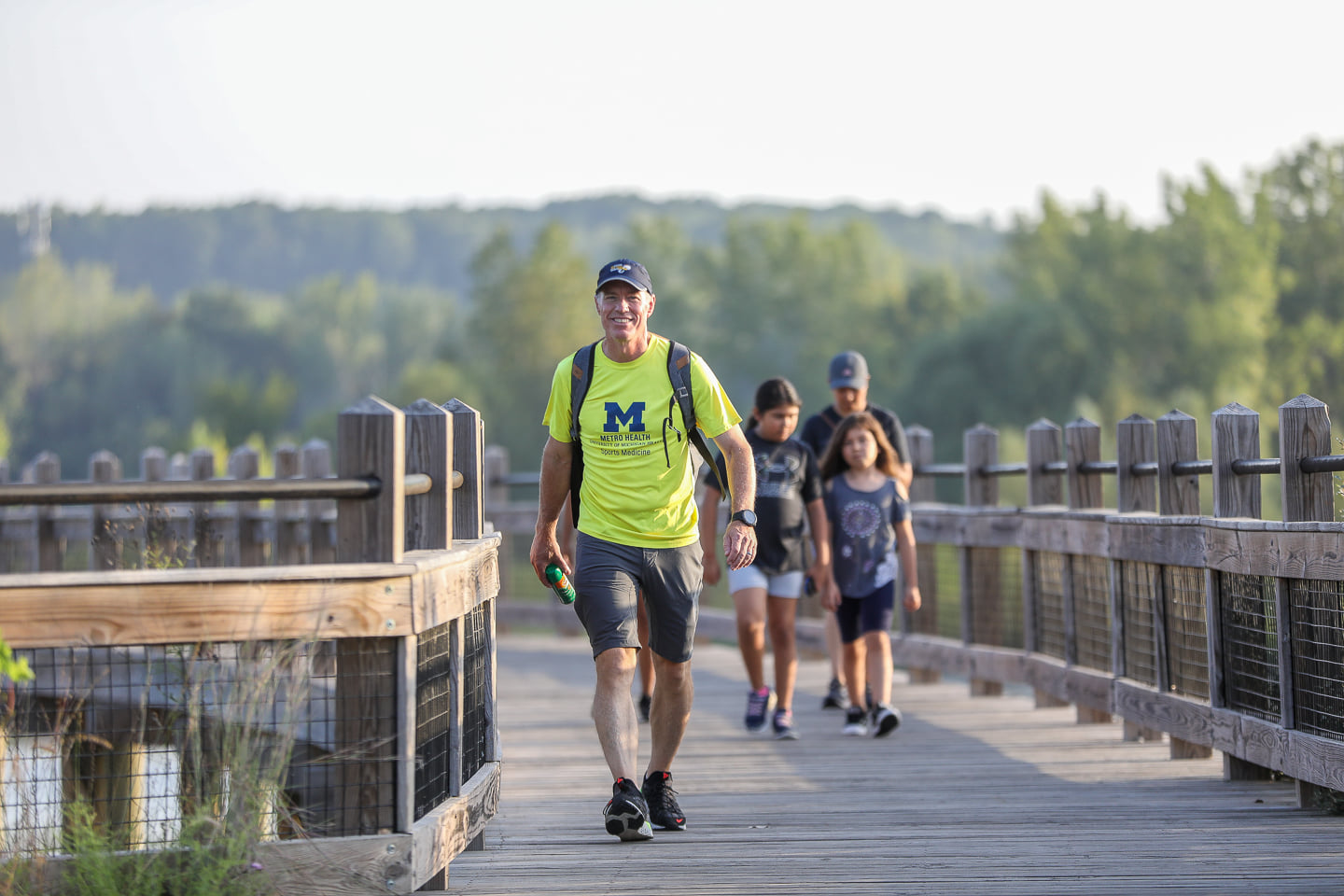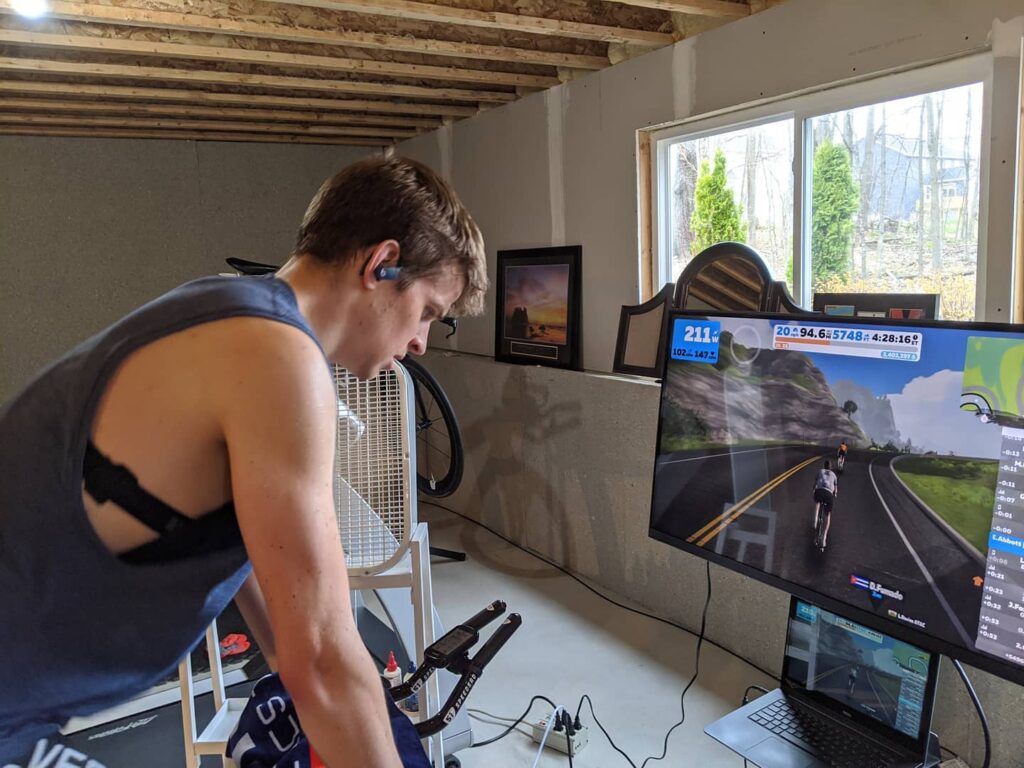
01 Mar Movin’ On Out(side)
Ed Kornoelje DO
University of Michigan Health-West
Even though it doesn’t look or feel like it, we will be able to spend more time training outdoors soon! I know some of you spend a lot of time outside in the winter, but even the most die-hard outdoor enthusiasts spend more time on treadmills and bike trainers than they would like. And the roads, sidewalks, trails, temps and weather make it more difficult to really know how fit we are. Case in point—I just got back from a conference in Florida, and my runs there felt much better than any of my treadmill or outdoor runs here over the last few months. Gotta love the clear roads and non-freezing temps! So is it as easy as that—wait for warm weather and then go for it?
The answer—yes and no. One of the issues we need to contend with here in West Michigan as we transition has already been mentioned—weather. The good news? Due to our rapidly changing weather year-round, we are already prepared for this. One day warm, another cooler, some rain, and some snow still likely to come means layers, layers, layers! It is easy to take off a jacket and wrap it around your waste or stash in on your bike—it’s hard to warm up if you didn’t bring it along! Other weather/environment thoughts—sunscreen (yes even here in Michigan), sunrise/sunset times (or lights), check the weather the day you go outside—forecasts change daily!
OK—enough on the weather. Living in Michigan you likely are pretty weather savvy by now—what else will affect this transition? Let’s start with running. This winter you have either run less, more, or the same as you had been running (sort of obvious I know). But unless you have spent the last 3-4 months in the south somewhere, even if you have kept your milage fairly consistent, you have spent more time on the treadmill or sloppy roads. Your gait and foot strike will be a little different, and your muscles will have been used in a different manner as well (which is actually a good thing). What I like to do is continue to do some of my runs on a treadmill for the next 4-6 weeks, gradually doing more and more outside, and fewer inside. If you have run a little less than you will be, use the same principle—ramp up gradually, adding some indoor runs if you have access to a treadmill, or adding shorter outside runs, and ramping up the length. Don’t increase both the length of runs AND number of runs in the same week—increase one or the other. And make sure you know where you are with your shoes—treadmill miles still beat up the cushioning. 300-500 miles is still a good number to shoot for.

What about cycling adjustments? Most of you have been doing some cycling on a trainer or perhaps a Peloton (or similar). While this type of riding may be more similar to the outside version than running, it will still feel a little different. Over the next 6 weeks there will periods of warmth followed by cold, particularly at night. Be careful with melting and freezing snow. Watch for potholes. Cold air can also trigger reactive airway disease which can be a sign of asthma or exercise induced bronchospasm. You will likely be a bit more out of breath as you transition anyway—if this does not appear to be improving after 10-14 days of regular outside training see your sports med doc. There are testing and treatment options that will help. And if it does not turn out to be lung related, it may be ferritin/iron related—we will repost my article on this topic soon. If you have not had this tested, you should—this is one often overlooked blood test that may make a huge (not being dramatic here) difference in your training and racing performance.
Strength train. This is one I have trouble with as well—I run (and cycle a bit), but don’t strength train enough. It’s not too late to start (anytime of year really), but if you strength train two times a week for the next 6 weeks, you will be much further ahead than if you do not. Then keep it up at least once a week to maintain over the “outdoor” season. Next fall go back to two
times a week from October through March.
Finally, an all-time favorite of mine—listen to your body. This “in to out” transition will feel different, even if you have been very active over the winter. Temps will be warming, but still cool. The surfaces will be improving, but different than you are used to. Don’t be alarmed if your paces are slower for a few weeks—keep up/ramp up the volume, but don’t try to push the pace—yet. Use March to transition and April to start pushing.
Dr. K has offered up his knowledge and services before and will again. DM me on Facebook (Edwin Todd) if you have a particular question or call 616-252-7778 to set up an appointment at University of Michigan Health and they will get you right in. Dr. Kornoelje has worked with triathletes and endurance athletes for almost 25 years and he is a talented endurance athlete as well. We promise he will keep you going!